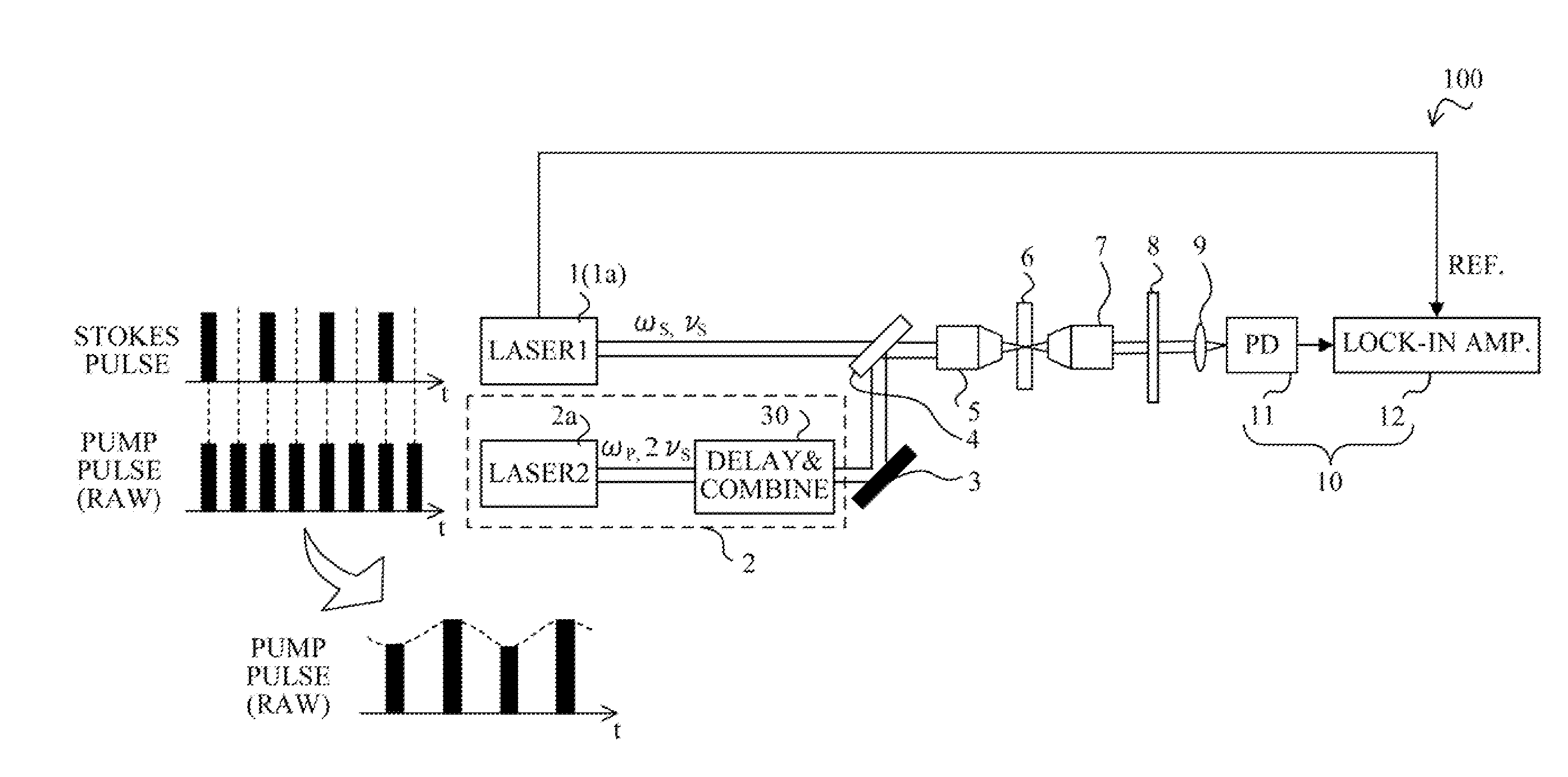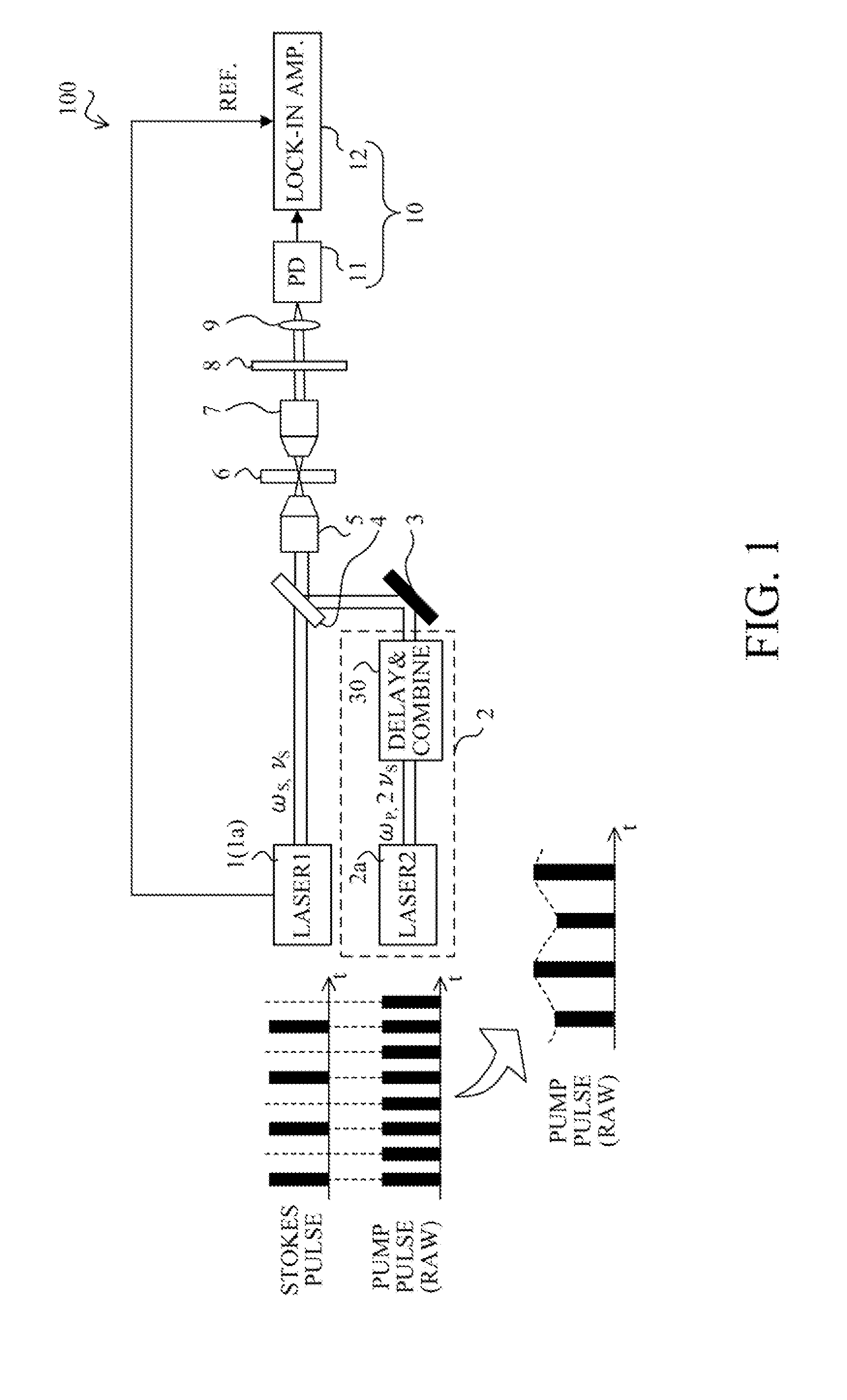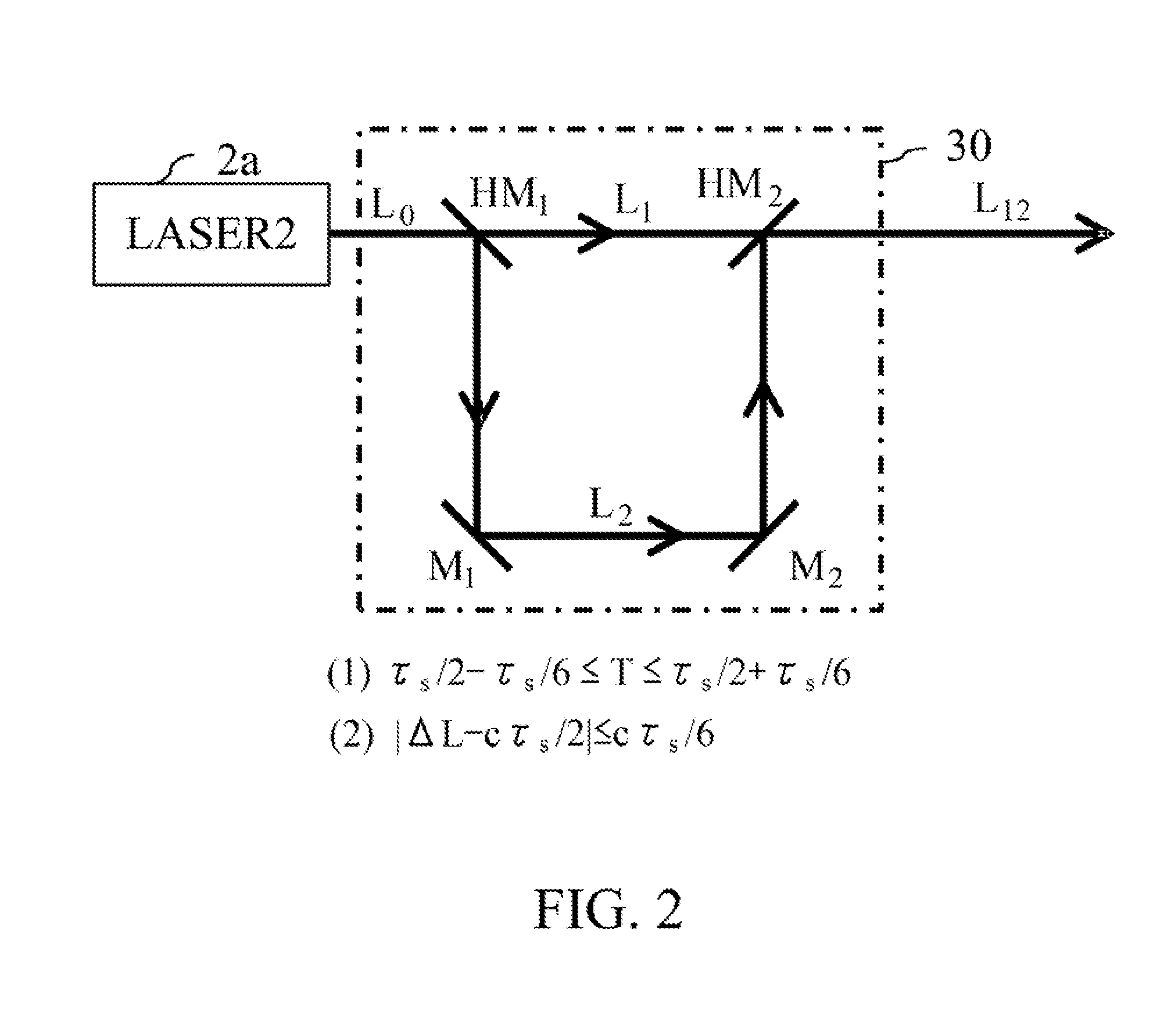Stimulated raman scattering detection apparatus
a detection apparatus and raman scattering technology, which is applied in the direction of optical radiation measurement, instruments, spectrometry/spectrophotometry/monochromators, etc., can solve the problems of deteriorating the signal-to-noise ratio of the laser source, requiring frequent extensive maintenance, and generating a large intensity noise component of the laser output of the stable small laser such as the fiber laser, so as to reduce the intensity noise component and improve the s/n ratio of the detection ligh
- Summary
- Abstract
- Description
- Claims
- Application Information
AI Technical Summary
Benefits of technology
Problems solved by technology
Method used
Image
Examples
example 1
[0017]FIG. 1 schematically shows a configuration of a stimulated Raman scattering (SRS) detection apparatus that is a first embodiment (Embodiment 1) of the present invention. The SRS detection apparatus 100 can be used as apparatuses such as a microscope and an endoscope for observation, measurement, diagnosis and other usages.
[0018]The SRS detection apparatus 100 of this embodiment includes a first light pulse generator 1 that generates a first light pulse train to be used as Stokes light, and a second light pulse generator 2 that generates a second light pulse train to be used as pump light. Moreover, the detection apparatus 100 includes an optical system by a mirror 3, a half mirror 4, a first objective lens 5, a second objective lens 7, a color filter 8 and a collective lens 9. Furthermore, the detection apparatus 100 includes a detector 10 constituted by a photodiode 11 that is a light-receiving element and a lock-in amplifier 12 that is an electronic circuit synchronously det...
example 2
[0057]FIG. 6 shows a detailed configuration of a delaying and combining part 30 in an SRS detection apparatus that is a second embodiment (Embodiment 2) of the present invention.
[0058]A raw light pulse L0 emitted from a second light source 2a is reflected by a first mirror M1 provided in the delaying and combining part 30 and then transmitted through a half wave plate WP to enter a polarization beam splitter PBS. The polarization beam splitter PBS reflects an S-polarized light pulse L2 that is one light pulse of the entering raw light pulse L0 and transmits the a P-polarized light pulse L1 that is the other light pulse of the raw light pulse L0. Thereby, the raw light pulse L0 is divided into the P- and S-polarized light pulses L1 and L2 that are two light pulses. Adjusting an azimuth of an optic axis of the half wave plate WP makes it possible to equalize intensities of the P- and S-polarized light pulses L1 and L2 to each other.
[0059]The S-polarized light pulse L2 reflected by the...
example 3
[0065]FIG. 7 shows a detailed configuration of a delaying and combining part 30 in an SRS detection apparatus that is a third embodiment (Embodiment 3) of the present invention. This embodiment is a modified example, and constituent elements of the delaying and combining part 30 are same as those in Embodiment 1.
[0066]Although description was made of a possibility of the interference between the two light pulses to be combined when the delay time T is set to τS / 2 in Embodiment 2, this embodiment will describe a method to avoid that possibility without using polarized light as Embodiment 2. Specifically, this embodiment sets the delay time T within the range shown by the expression (1) in Embodiment 1 and within a range shown by the following expression (3) where p represents a pulse width of the second light pulse:
|T−(τS / 2)|≧2p (3)
[0067]On the basis of the expression (3), an optical path length difference ΔL of the delaying optical path where the light pulse L2 passes from the opti...
PUM
 Login to View More
Login to View More Abstract
Description
Claims
Application Information
 Login to View More
Login to View More - R&D
- Intellectual Property
- Life Sciences
- Materials
- Tech Scout
- Unparalleled Data Quality
- Higher Quality Content
- 60% Fewer Hallucinations
Browse by: Latest US Patents, China's latest patents, Technical Efficacy Thesaurus, Application Domain, Technology Topic, Popular Technical Reports.
© 2025 PatSnap. All rights reserved.Legal|Privacy policy|Modern Slavery Act Transparency Statement|Sitemap|About US| Contact US: help@patsnap.com



